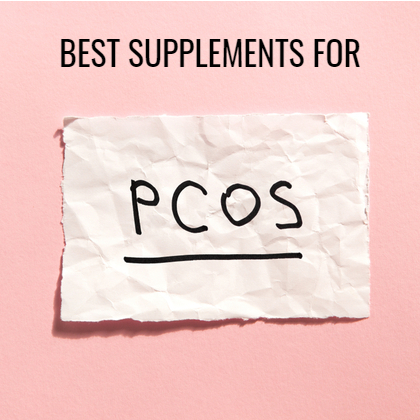
As you approach menopause, oestrogen and progesterone levels rise and fall unevenly throughout your body, leading to an array of physical and emotional symptoms.
You may, for instance, experience increased pain around your ovaries during menstruation. When circulating concentrations of oestrogen are high, abdominal and ovarian discomfort is more likely to occur. In some cases, however, ovary pain may be the result of another health condition.
What is perimenopause?
Perimenopause refers to the stage in your reproductive years when your body starts the natural transition to menopause. You enter the menopause when you haven’t had a period for 12 consecutive months.
 While most women experience perimenopause in their 40s, some undergo this hormonal change earlier or later. On average, the perimenopause lasts around 4–8 years, with 1 in 10 women experiencing perimenopausal symptoms for up to 12 years (1).
While most women experience perimenopause in their 40s, some undergo this hormonal change earlier or later. On average, the perimenopause lasts around 4–8 years, with 1 in 10 women experiencing perimenopausal symptoms for up to 12 years (1).
Does ovarian pain get worse during perimenopause?
Most women who menstruate experience abdominal cramps in varying degrees, including pain around the uterus, womb and ovaries. These cramps tend to be caused by the uterine muscles contracting to help the uterus shed its lining each month.
Some women with underlying health conditions, like endometriosis, pelvic inflammatory disease (PID), or fibroids, may have more painful period cramps than others.
During perimenopause, you may have longer, heavier periods and, therefore, suffer from more intense cramping sensations around your ovaries.
What causes ovary pain during perimenopause?
Most research suggests perimenopause may increase general abdominal pain, including discomfort around the ovaries, during menstruation. The glands in the lining of your uterus release hormones called prostaglandins. These hormones prompt your uterus to contract during menstruation (2). You secrete more prostaglandins when your circulating levels of oestrogen are high — which can often happen during perimenopause given your hormones spike irregularly (3).
Put simply, the higher your prostaglandin levels, the more your uterus contracts during menstruation. And if the uterus contracts too forcefully, it can push against surrounding blood vessels, thereby cutting off the oxygen supply to the uterus’ muscle tissue. Due to this brief loss in oxygen, you may experience more frequent and painful cramps, along with increased pain around your ovaries (4).
Treatments for perimenopause aches and pains
Fortunately, there are plenty of ways to support the reduction of cramps and provide relief from the pain.
Lifestyle
-
Take a warm shower or relax in a hot bath.
-
Place a hot water bottle on your stomach. Evidence suggests topical heat may be as effective at mitigating menstrual cramps as ibuprofen (5).
-
The NHS recommends gentle exercise, such as swimming or walking, to ease period pain (6). According to recent research, low-impact aerobic exercise may help to mitigate the pain caused by abdominal cramps (7).
-
Gently massage your lower belly. Emerging data purports acupressure may provide some relief for menstrual discomfort (8). In particular, one study reported that rubbing circles on your calf, just above the ankle, may ease period pain (9).
-
Practise relaxation techniques, like deep belly breathing, yoga, meditation, or Tai Chi, as stress may intensify cramps (10).
Nutrition
-
Avoid caffeine. Caffeine is a vasoconstrictor, which may cause the vessels leading to the uterus to tighten. Try switching to tea for the first few days of your period.
-
Reduce your alcohol intake. Alcohol skews hormone regulation, which can exacerbate abdominal cramps (11).
Studies reveal foods rich in saturated fat, like fatty cuts of meat and dairy, may exacerbate period pain due to their role in inflammation (12). -
There’s some evidence to suggest supplementing with a combination of magnesium and vitamin B6 may support the reduction of discomfort (13).
-
Increase your intake of dietary omega-3 fatty acids, which can be found in oily fish, chia seeds, avocados, hemp seeds, walnuts, and plant-based microalgae. You may also wish to take a high-strength quality fish oil supplement or vegan alternative as a nutritional buffer.
-
Consider taking PEA, an endocannabinoid-like compound found in almost every cell, tissue, and fluid in the body. Naturally produced when cells are damaged or threatened, PEA is a well-researched alternative to CBD. It’s a popular choice to support physical discomfort in menopause.
You can find more about which foods to prioritise during the menopause transition here
When to seek medical advice
Not all perimenopausal ovarian pain is due to menstrual cramping. If your cramps are excruciatingly painful, chronic, or disrupt your everyday life, don’t hesitate to consult your doctor. This type of ovarian pain may be symptomatic of another condition.
Other possible explanations for ovarian pain:
Ovarian cyst
Fluid-filled sacs, ovarian cysts can develop on a woman’s ovaries. Though most cysts are harmless, a large cyst can rupture and cause the following symptoms:
-
Abdominal pain on the side of the cyst
-
A feeling of fullness in your stomach
-
Bloating
It’s important to note a cyst rarely triggers a cramping sensation. Typically, there’s a sharp and sudden pain.
While most cysts aren’t usually anything to worry about, if you experience any of the symptoms above, it may be worth speaking with your GP.
Ovarian cancer
Ovarian cancer is rare, but it remains a possibility if you experience ovarian pain. The symptoms of ovarian cancer include:
-
Pain in your abdomen or pelvis
-
Feeling full quickly after you eat
-
An urgent need to urinate
-
Changes in your menstrual cycle
-
Pain during sex
-
Bloating
-
Fatigue
Although many non-cancerous health conditions can trigger these symptoms, it’s still a good idea to speak to your doctor, mainly because your risk for ovarian cancer increases with age.
Ovarian pain can be an unwelcomed issue at this time, especially when you’re already navigating the other symptoms of the menopause. However, with the simple lifestyle and nutrition advice above, it’s certainly possible to ease perimenopausal ovarian pain. Explore the rest of our
What's the link between PCOS and the menopause?
While PCOS and the menopause are both female hormonal conditions, they affect hormone levels in very different ways.
In PCOS, throughout the years a woman can get pregnant (around 15-44 years old), she experiences a hormonal imbalance where levels of the hormone progesterone are lower than average, and levels of androgens (male hormones) are higher.
The menopause, however, is characterised by a drop in female sex hormone levels and marks the end of a woman’s reproductive years.
How does PCOS affect your hormone levels?
Most experts agree that hormonal imbalance is at the root of PCOS, but the precise cause of this remains unclear.
Generally speaking, women with PCOS produce higher concentrations of male sex hormones, or androgens, and lower levels of the female sex hormone, progesterone. This affects ovulation patterns and, by association, the menstrual cycle.
What hormonal changes happen during the menopause?
The menopause marks the end of menstruation and, therefore, a woman’s reproductive years. Some years before the menopause, oestrogen and progesterone levels decline, in a hormonal transition called the perimenopause.
As a woman approaches the menopause, oestrogen and progesterone eventually drop so significantly that she stops ovulating, which ceases menstruation altogether.
Is it PCOS or the menopause?
Some symptoms of the perimenopause are similar to PCOS symptoms, and if a woman starts experiencing symptoms of PCOS in her 30s and 40s — around the time of the perimenopause — it can be hard to distinguish between the two.
When women with PCOS enter the perimenopause, they can experience symptoms of both conditions. It’s also worth noting that women with PCOS tend to reach menopause two years later than women without PCOS (1).
Which symptoms are similar?
The perimenopause and PCOS share these symptoms:
-
Mood swings
-
Sleep issues
-
Irregular or missed periods
-
Thinning hair on the head
-
Weight gain
-
Unwanted facial or body hair
How to tell the difference in your symptoms
Some symptoms, however, are unique to either the perimenopause or PCOS. Understanding these idiosyncrasies can help to differentiate between the two conditions.
Symptoms unique to the perimenopause that don’t happen in PCOS:
-
Hot flashes
-
Night sweats
-
Intimate dryness
-
Changes in libido
-
Urinary incontinence
Symptoms unique to PCOS that don’t occur in perimenopause:
-
Acne
-
Headaches
-
Pelvic pains
How does menopause affect PCOS?
Since the perimenopause is often associated with weight gain and increased cardiovascular risk, some research suggests that these symptoms can be aggravated in women who also have PCOS. It’s thought that this is due to the metabolic disturbances associated with PCOS (2).
How does menopause affect PCOS?
Ultimately, the menopause doesn’t cure PCOS. The hormonal fluctuations in the perimenopause are unable to address the hormonal imbalance that characterises PCOS.
Does PCOS get worse with age?
Experts have hotly debated how PCOS changes with age. Ultimately, it will depend on your situation, although some women experience less symptoms of PCOS post-menopause. In one study, researchers compared the hormone levels of women with PCOS to those without the endocrine condition (3). Then, 21 years later, researchers re-examined the participants’ hormone profiles.
The study revealed that the testosterone levels in women with PCOS eventually decreased, albeit gradually. Crucially, however, testosterone didn’t reach normal levels until 20 years after the menopause. This result is another clear indication that the menopause is unable to redress PCOS symptoms.
Although the drop in testosterone wasn’t successful at reducing all PCOS symptoms, it certainly had a positive impact on the participants’ when they got older. In particular, researchers reported the women had more regular menstrual cycles than before.
Managing PCOS in the perimenopause
Improve Sleep Hygiene
Symptoms of the perimenopause and PCOS can make it harder to attain quality sleep. Try to prioritise getting enough rest each night with these tips:
-
Keep regular sleep and wake hours, even at the weekends
-
Avoid using technology 90 minutes before bed (the blue light emitted from devices can inhibit the production of your sleep hormone, melatonin)
-
Remove all screens from your bedroom
-
Don’t use your phone as an alarm clock
-
Fit blackout blinds in your bedroom
-
Limit your caffeine intake after 12 pm
-
Embrace morning light with regular outdoor breaks
Weight Management
PCOS and perimenopause can also make weight gain more likely. To maintain a healthy weight, try these simple switches:
-
Eat a whole food diet — that is, food in its natural state
-
Avoid eating shop-bought food with more than 5 ingredients
-
Aim for upwards of your 5-a-day
-
Drink at least 1.5 litres of water daily
-
Remove refined sugar from your diet. If you experience a sugar craving, have a handful of nuts, glass of water, or square of 70% dark chocolate.
-
Reduce portion size and skip seconds
-
Perform some form of physical activity daily
Managing one hormonal condition can be challenging, so managing two can feel even more daunting. Understanding your conditions is the best way to know how best to manage them. If you’re looking for more information on PCOS, follow this link for our dedicated hub. Alternatively, find out more about the menopause in our Menopause hub.
References:
-
Welt. C., Carmina E., Lifecycle of polycystic ovary syndrome (PCOS): From in utero to menopause. The Journal of Clinical Endocrinology and Metabolism. 2013 December 1;12(1):4629-4638.
-
Lenart-Lipinska M. et al., Polycystic ovary syndrome: clinical implication in perimenopause. Menopause Review. 2014;13(6):348-351.
-
Schmidt J. et al., Reproductive hormone levels and anthropometry in postmenopausal women with polycystic ovary syndrome (PCOS): A 21-year follow-up study of women diagnosed with PCOS around 50 years ago and their age-matched controls. Journal of Clinical Endocrinology and Metabolism. 2011 July;96(7):2178-2185.
Other Sources:
-
nhs.uk. 2020. Menopause – Symptoms. Available online: https://www.nhs.uk/conditions/menopause/symptoms/
Related Posts
Disclaimer: The information presented by Nature's Best is for informational purposes only. It is based on scientific studies (human, animal, or in vitro), clinical experience, or traditional usage as cited in each article. The results reported may not necessarily occur in all individuals. Self-treatment is not recommended for life-threatening conditions that require medical treatment under a doctor's care. For many of the conditions discussed, treatment with prescription or over the counter medication is also available. Consult your doctor, practitioner, and/or pharmacist for any health problem and before using any supplements or before making any changes in prescribed medications.

Olivia
Olivia Salter has always been an avid health nut. After graduating from the University of Bristol, she began working for a nutritional consultancy where she discovered her passion for all things wellness-related. There, she executed much of the company’s content marketing strategy and found her niche in health writing, publishing articles in Women’s Health, Mind Body Green, Thrive and Psychologies.
View More



